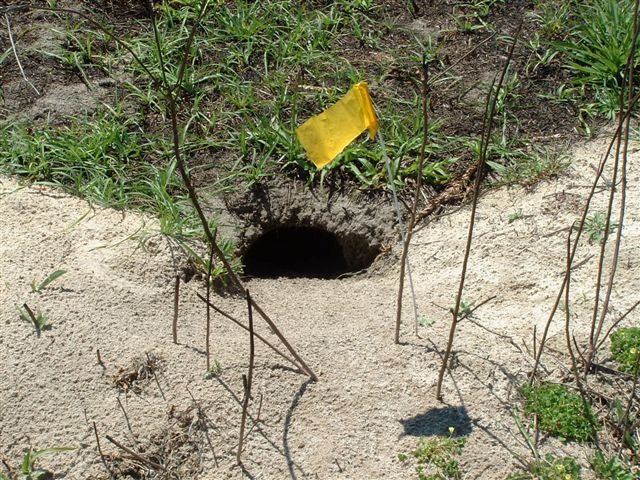Gopher Tortoise - Lynn McGann
Gopher Tortoise
As visitors enter P.E.A.R. Park they will notice road crossing signs for the Gopher Tortoise. The signs advise the presence of this threatened species and remind all who enter to be aware of the wildlife that resides here. You may never see a gopher tortoise but you will be able to view and enjoy diverse species as you tour the park.
This reptile’s shell, which is an outgrowth of its skeleton, is its best protection. They may live up to 60 years but their numbers are in decline. The tortoise forages about once every three days and feeds on specific plants, berries, fruit and foliage.
One tortoise will have several burrows, which average 15 feet in length but can be more than 40 feet long. A burrow is the second line of defense from weather, predators, fire and is also a compatible refuge for hundreds of other animals. PEAR members mark and monitor the burrows to keep track of the population and to avoid damage from mowing or construction. It is unlawful to even touch a gopher tortoise or its burrow and is our intent that the park remains a safe haven for this beautiful creature.Found at PEAR is the Gopher apple plant. It bears fruit much like oak seedlings and are relished by wildlife, including the threatened gopher tortoise,
For More Information about Gopher Tortoise visit :www.ashtonbiodiversity.org/ or www.gophertortoisecouncil.org
